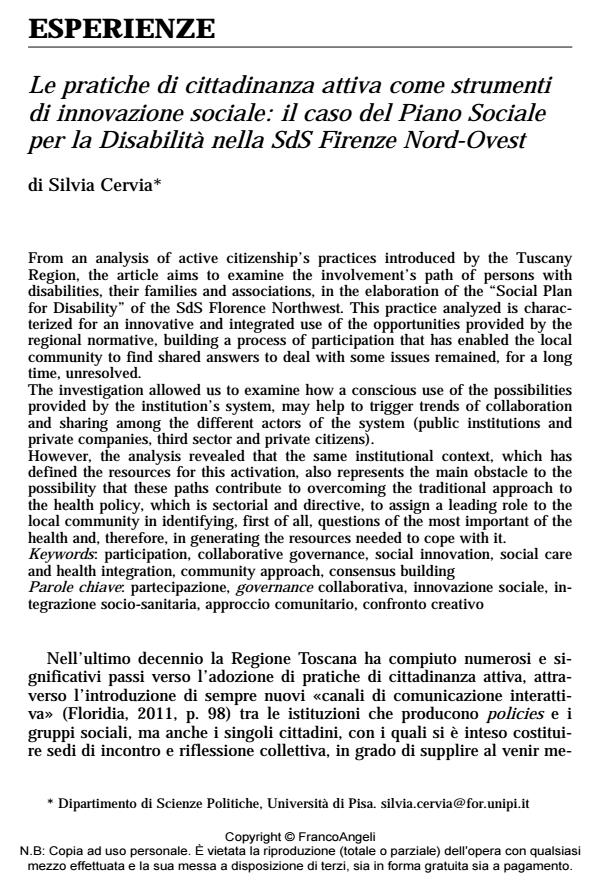The practices of active citizenship as medium of social innovation: the Social Plan for Disability in SdS North-West Florence as case study
Journal title SALUTE E SOCIETÀ
Author/s Silvia Cervia
Publishing Year 2015 Issue 2015/1
Language Italian Pages 13 P. 131-143 File size 53 KB
DOI 10.3280/SES2015-001010
DOI is like a bar code for intellectual property: to have more infomation
click here
Below, you can see the article first page
If you want to buy this article in PDF format, you can do it, following the instructions to buy download credits

FrancoAngeli is member of Publishers International Linking Association, Inc (PILA), a not-for-profit association which run the CrossRef service enabling links to and from online scholarly content.
From an analysis of active citizenship’s practices introduced by the Tuscany Region, the article aims to examine the involvement’s path of persons with disabilities, their families and associations, in the elaboration of the "Social Plan for Disability" of the SdS Florence Northwest. This practice analyzed is characterized for an innovative and integrated use of the opportunities provided by the regional normative, building a process of participation that has enabled the local community to find shared answers to deal with some issues remained, for a long time, unresolved. The investigation allowed us to examine how a conscious use of the possibilities provided by the institution’s system, may help to trigger trends of collaboration and sharing among the different actors of the system (public institutions and private companies, third sector and private citizens). However, the analysis revealed that the same institutional context, which has defined the resources for this activation, also represents the main obstacle to the possibility that these paths contribute to overcoming the traditional approach to the health policy, which is sectorial and directive, to assign a leading role to the local community in identifying, first of all, questions of the most important of the health and, therefore, in generating the resources needed to cope with it.
Keywords: Participation, collaborative governance, social innovation, social care and health integration, community approach, consensus building
Silvia Cervia, Le pratiche di cittadinanza attiva come strumenti di innovazione sociale: il caso del Piano Sociale per la Disabilità nella SdS Firenze Nord-Ovest in "SALUTE E SOCIETÀ" 1/2015, pp 131-143, DOI: 10.3280/SES2015-001010